- Home
- Tanith Lee
Weird Tales #327 Page 2
Weird Tales #327 Read online
Page 2
The Treasury of the Fantastic edited by David Sandner and Jacob Weisman. Frog, Ltd., 2001. Hardcover, 747 pp. $27.50. This is a major effort, which deserves more than a brief listing. It is a well-researched, well-thought-out historical anthology of fantasy fiction in English prior to the institution of Weird Tales® in 1923, when the fantastic began to become a genre. The material ranges back into the early 19th century. Many of the stories are acknowledged masterpieces (“Carmilla” by J. Sheridan LeFanu, “The Mysterious Stranger” by Mark Twain, “Casting the Runes” by M.R. James) but there are also a few rare ones even we’ve never heard of. Worth a look. Would-be fantasy writers should read such anthologies to get a good grounding in what has been done and what is possible in the fantasy field. (Frog Ltd. P.O. Box 12327, Berkeley CA 94712.)
* * * *
The Most Popular Story in issue #326 was Charles L. Harness’s “The Dome,” with Ashok Banker’s “Devi Darshan” coming in second. A couple of readers asked us who Mr. Harness is. “The Dome” was actually his first sale to Weird Tales® but Mr. Harness is by no means a “new” writer. He sold his first story to Astounding in 1946. His classic novel The Paradox Men first appeared in Startling Stories in 1949. Over the years he has produced such classics of science fiction as The Ring of Ritornel and The Rose. NESFA Press has published two omnibus volumes of his work, Rings (containing four novels, one of them published for the first time) and An Ornament to His Profession (short stories), both of which we recommend. (NESFA Press, P.O. Box 809, Framingham, MA 01701)
Someone also asked us who Ashok Banker is. He is a leading Indian writer, a resident of Bombay, who has published hundreds of stories in various genres in India. We have read his fantasy before in the British magazine Interzone.
Voting was extremely light. We continue to want to hear from you.
* * * *
We didn’t get a lot of letters, but some are reassuring: Author Fred Chappell remarked:
I’ve been enjoying WT right along, although I’ve been too lazy, alas, and maybe a little too harried to write letters. I don’t think writers should “rate” other writers’ work, unless it’s in the way of duty — as when one serves as critic or as blurbist or panelist, etc.
(Still, I can’t help remarking that Charles Harness’ take on Bruneleschi is really nifty. I like this one a lot!)
Elaine Weaver writes:
Kudos for your editorial titled “We Will Not Stop Dreaming.” Amen! And your approach to the situation makes perfect sense as well. There’s no doubt that the events of September 11th will affect all the arts for some time to come. Responsible members of the creative community will find healthy ways of dealing with the shock and anger we feel without succumbing to bigotry. It will be interesting to see how our culture changes — hopefully in a positive manner.
All we can say in response — since this is not a political magazine — is that we hope that artists will take the same attitude that we have, and try to go on dreaming, producing art during wartime, rather than choosing either silence or cheap propaganda. But at the same time remember that if the totalitarians or theocrats win, then art stops, so there is something to fight for. Our hope is that as a result of all these events, one day Weird Tales® will be able to publish a writer from Afghanistan.
Another bit of editorial reality we might mention is that if these editorials run on too long, they don’t fit. And we wanted to talk about the Lord of the Rings movie.… Well, maybe next time.
SHADOWINGS, by Douglas E. Winter
Black House, by Stephen King and Peter Straub
Random House. 640 pp., $28.95.
“Sometimes little boys get lost.”
Once upon a time, when we all lived in California and no one lived any place else — before Ronald Reagan was President, video killed the radio star, and George Bush’s CIA trained Usama Bin Laden — two friends talked about writing a novel. After storming the bestseller lists with several books of their own, Stephen King and Peter Straub finally collaborated on The Talisman (1984), but some readers and critics were bemused. Defying expectation, King and Straub had created a seamless epic of the imagination that was not comfortably defined — not horror, not fantasy, but a surreal unraveling of the riddle of how J.R.R. Tolkien might have written The Adventures of Huckleberry Finn.
The Talisman was a post-modern picaresque, free-wheeling from sea to shining sea and into another world, with a new American Sawyer, twelve-year-old Jack, lighting out for the Territories to save his dying mother. The “innately good” Territories were a mirrorland — a parallel reality in which progress was not our most important product, where the grass was greener, the sky clear blue, and hope, like the land, ever fertile. It was an American Shire, that time-honored realm of fantasy novels where things linger as they’d been in a presumably better time, and offer the chance to start over, to do it right for a change. Even lives were paralleled — in the Territories, each human had a “Twinner” — and Jack’s mother, a B-movie queen ravaged with cancer, was true royalty, the Once and Future Queen, preyed upon by a sleeping sickness and dire evil. But Jack Sawyer had no alternate self — his Twinner was murdered at birth — and his singularity defined and directed him on his ever-westward journey to redemption.
The novel embraced the adolescent, escapist impulses of fantasy and grew them through naturalistic storytelling into adulthood, championing innocence (and mourning its loss); memorializing the love of friends, the bond of mother and child; and challenging the new world order of a hurried, secular, technophiliac culture. Travellin’ Jack re-enacted the American experience — a pilgrimage into uncharted wilderness, the crossing of a great frontier, the confrontation of our westward limits — reminding readers of what Robinson Jeffers called the dignity of room, the value of rareness. In Jack’s shoes we walked to the great good place we left behind, the Eden of childhood from which we were cast out — by age, perhaps, but also by the corruptive forces of the social, the industrial, the political.
In the novel’s finale, Jack Sawyer found, if only for a moment, the possibility of meaning in a world of wasted time and wasting flesh. It was the Talisman — “the axis of all possible worlds” — a symbol of redemption and creativity, that fragile and delicate thing we call good. With its power he confronted the darkness and the despair within himself, and within all of us: the will toward nothingness.
The Talisman concluded on Jack’s thirteenth birthday, his rite of passage to adulthood and awareness complete, with parting words from The Adventures of Tom Sawyer: “It being strictly a history of a boy, it must stop here; the story could not go much further without becoming the history of a man.” Although King would revisit the Territories as early as The Eyes of the Dragon, no sequel was ever planned.
Fast-forward nearly two decades, and many words and worlds later, when the question implicit in that epigraph came knocking on the doors of Stephen King and Peter Straub: Whatever happened to Jack Sawyer? What about that unwritten history of the man?
The answer is Black House.
With The Talisman now an early entry in their bibliographies, the divergent novelistic pursuits of Stephen King and Peter Straub — like the fallacy of thinking of them as genre writers — is apparent. As stylists, their voices share next to nothing save a sublime individuality. Yet they remain ideal collaborators, bound not only by friendship but also by an essential enthusiasm, a shared aesthetic that finds the fiction of the dark fantastic an ideal forum for sustained inquiry into pain and wonder, love and loss, life and its potential for meaning. Indeed, the melancholy search for immanence that powered The Talisman resonates more deeply in the works of each man — and ultimately in Black House. And why not? With the passing years, each has witnessed a downward spiral of cultural and metaphysical disenfranchisement — of children growing up in a world where desires and delights are rarely discovered, but imposed by corporate hierarchies; where J.R.R. Tolkien sells fast food for Burger King.
Although wisely eschewing
the tagline ‘Talisman 2,’ Black House is presented as a sequel — not in structure or plot, but in its particulars. It is that history of the man, a Jack Sawyer who, like most grown-ups, has pretty much forgotten the history of the boy. Now past thirty, his exploits in the Territories — those days of Travellin’ Jack and his friends Speedy Parker, Wolf, and Richard Sloat — have faded into something less than memories, dim echoes of dreams or childish fantasies. But Jack’s persistent individuality, his gift for ferreting out evil, remains. That desire to detect is the instinct of a theologist — or, of course, a novelist: “I always wanted to find what was missing. My whole life was about the search for a secret explanation.” His adulthood has been spent as a cop, working his way up the ranks of LAPD Homicide, then fraying out with the knowledge that the real mystery remains unsolved — and finally retiring to a rural Wisconsin Wonderland known as Coulee Country.
While The Talisman ranged from coast to coast and into the beyond, Black House is more insular and intimate. Like its protagonist, it is set for the most part (perhaps the better word is trapped) in novelistic reality — not until its two-hundredth page does Jack visit the realm of the Faraway. Coulee Country itself is a fine amalgam of King’s Maine, Straub’s Wisconsin, and Twain’s Missouri. There, the town of French Landing offers the latest incarnation of the setting that King and Straub perfected in ’Salem’s Lot and Ghost Story (and that has governed an entire generation of horror fiction): a “guileless, good-hearted corner of the world” that recalls the past as a finer, better place, yet cloaks vile secrets that worm into the present and threaten the future.
As its name suggests, Black House twists away from Twain and Tolkien toward Charles Dickens, Mervyn Peake, and the grim, grey places where children are more often victims than heroes. Wonderland is haunted by slippage, the real melting into the fantastic in ways more violent and foreboding than those of The Talisman. Although the entropic pall of evil will again demand a quest of the knight-errant Jack — one whose grail is a human life, whose rescue would avert a cosmic disaster — the stakes are increasingly complex and ultimately more fatal.
Jack is drawn, at first reluctantly, into a baffling case of serial murder: the grisly doings of a predator known as The Fisherman, who abducts, butchers, and partially devours children. This vile successor of Albert Fish and Fritz Haarmann hides beneath aged, corrupted flesh, but he serves two masters: his own mundane madness and a force from the beyond that is quintessentially lower.
“Jack Sawyer is acquainted with the infinite, and that makes him a problem.” Alive, awake for the first time in years — “the rest of his adult life now feels so gray” — Jack rediscovers the Territories, and through them, his place among worlds. Central to his revelations is the knowledge that the Territories are more than an unspoiled twin of our planet, but one of many worlds, “worlds beyond telling” that are linked by a nexus well-known to the readers of Stephen King: the Dark Tower, at whose apex is a cell that imprisons the Crimson King.
In The Talisman, Jack Sawyer ventured back to a time when things were not only simpler, but also more possible: “when you’re twelve, the mind and body are more elastic.” Yet the adult Jack has learned a vital lesson — that the past is the source of ghosts and pain: “Yes, it’s always the past. That’s where the hurt is, all you can’t get over.” His singularity has evolved into a profound duality; now he is “a person younger than twelve and older than thirty, stunned by both grief and love” — the best kind of man, one for whom neither age nor flesh is a trap.
The past and its secrets are locked in the Black House, an aged three-story wood-frame nightmare that “looks unbalanced: an off-kilter mind conceived it, then relentlessly brought it into off-center being.” Its builder has turned the house into its own shadow, its paint fading with time into “the leaden gray-black of thunderheads and dismal seas and the hull of wrecked ships. Black would be preferable to this utter lifelessness.”
But life of a kind still haunts the Black House. Like the Marsten House of Salem’s Lot or the eponymous estate of Shadowland, it is a house on the borderland. Inside waits an unguided tour of insanity, with “no plan for the future or memory of the past” — here “only the fuming present exists.” The decor is Twentieth Century vile — Martha Stewart meets Hieronymous Bosch — with rooms offering vistas otherwise seen only on bad acid.
The only meaningful direction is down, past a wall of human faces — “cut off, cured, and then stretched on squares of wood” — and finally into the abyss: the charred and smoking lands of an eternal endtime. There, the Crimson King holds court, hungering for more blood and sorrow, and for the breaking of the links that hold the realms of reality, imagination, and sanity in place.
Like its predecessor, Black House capably melds the prose styles of its masters into a common voice. There are passages where the reader may be tempted to guess the identity of the writer, but they’re infrequent. Even more impressive is the remarkable stylistic risk — this is a novel written in the present tense, collective: “Right here and now, as an old friend used to say, we are in the fluid present, where clear-sightedness never guarantees perfect vision.” The style makes for the least intrusive use of present tense in recent memory; and although the authorial “we” underscores the spirit of collaboration, it further serves the communal nature of the reading experience.
There’s also an appealing elegance to the style, and to the way in which King and Straub construct a narrative glidepath, swooping in and out of lives and universes with remarkable ease. It’s made even more effective by the presence of several profoundly drawn characters, particularly the blind disc-jockey and record-hound Henry Leyden. Indeed, one of the novel’s fine digressions — Jack’s musings on his feelings for Henry — is exquisite and moving; and probably says more about the friendship of Stephen King and Peter Straub than could be written by any journalist or biographer.
There are, perhaps inevitably, a few minor bumps on the road to glory. The discovery and first assault on the Black House by a band of motorcycle cronies known as the Thunder Five comes from deep in left field, but it does produce some of the novel’s creepier moments and down-and-dirty set-pieces. More curious is the patching of this text into King’s evolving lore of the Dark Tower and the Crimson King, which may delight some readers but confuse others — and which seems to lessen the novel’s individuality and its own mythic ambition.
“Sometimes little boys get lost” — and sometimes big boys get lost as well; but not Stephen King and Peter Straub. Black House, true to the promise of its predecessor, is a novel that resists the expected, that charts a course through regions vaguely familiar yet untested in their earlier fiction, that takes real risks and meets its own challenges
Although insistently unlike The Talisman, the novel serves it well as a sequel, while continuing its inquiry into the meaning of collaboration, and honoring, above all, the bonds of sonhood and friendship. Given its complex ambitions and its refusal to kowtow to the commercial, I suspect that the novel’s virtues, like those of its predecessor, will be better recognized with time.
And then, perhaps, in another twenty years or so . . .
ILLUSTRATED LIMERICK, by George Barr
My neighbor, next door down the hall,
Kept tapping all night on the wall
I listened, of course;
Thought it might be Morse.
Don’t know why he didn’t just call.
LITTLE DEAD GIRL SINGING, by Stephen Gallagher
Here’s one you won’t have heard before.
If you’re a parent with a musical child, then you’ll know the festival circuit. I don’t mean anything that is big business or in any way high-profile. I’m talking about those little local festivals run on dedication and postage stamps, where the venue’s a school theatre or a draughty church hall and the top prize is nothing more than pennies in an envelope. I’m talking about cold Saturday mornings, small audiences made up of singing teachers and edgy
parents, judges whose quality varies depending on how their judgements accord with your own, and shaky little juvenile voices cracking with nerves.
As you might have guessed, I have been there.
Never as an entrant, of course. Even the dog leaves the house when I sing. But every young singer needs an adult support team rather like a racing driver needs a pit crew, to provide transport and encouragement and to steer them through the day’s schedule. That’s where the parents come in. Some children turn out with their entire extended families in tow, decamping with them from class to class like a mobile claque.
But not us. By the time Victoria was twelve we’d reached the point where she wanted as little fuss or pressure as possible. The thought of one of those three-generation cheer squads would have filled her with horror.
“One of you can come,” she’d say. “And you’re not to sit right at the front. I don’t want to be able to see you.”

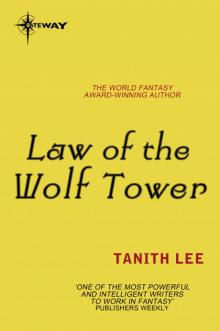 Law of the Wolf Tower: The Claidi Journals Book 1
Law of the Wolf Tower: The Claidi Journals Book 1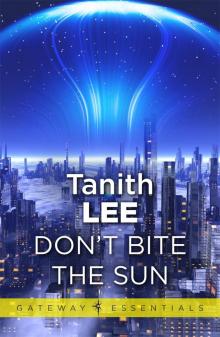 Don’t Bite the Sun
Don’t Bite the Sun Tanith By Choice: The Best of Tanith Lee
Tanith By Choice: The Best of Tanith Lee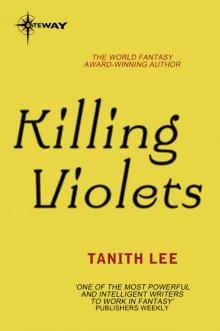 Killing Violets
Killing Violets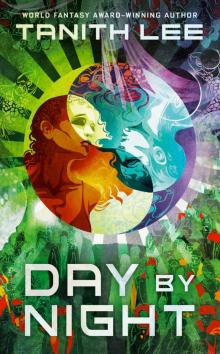 Day by Night
Day by Night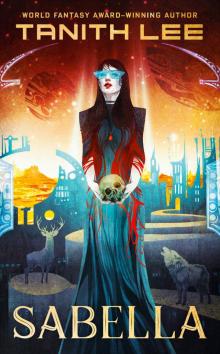 Sabella
Sabella Blood 20
Blood 20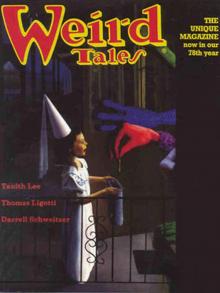 Weird Tales #325
Weird Tales #325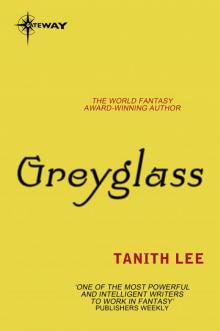 Greyglass
Greyglass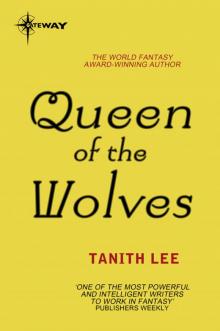 Queen of the Wolves
Queen of the Wolves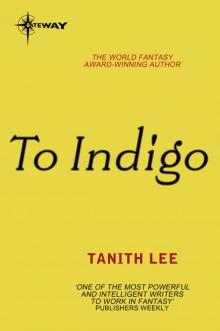 To Indigo
To Indigo Ghosteria Volume 2: The Novel: Zircons May Be Mistaken
Ghosteria Volume 2: The Novel: Zircons May Be Mistaken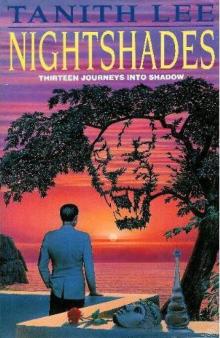 Nightshades
Nightshades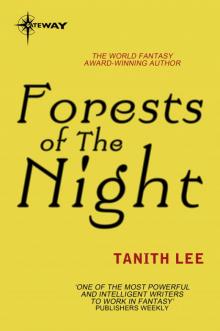 Forests of the Night
Forests of the Night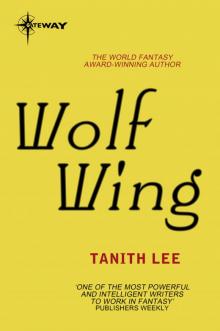 Wolf Wing
Wolf Wing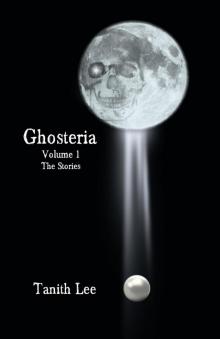 Ghosteria Volume 1: The Stories (Ghostgeria)
Ghosteria Volume 1: The Stories (Ghostgeria)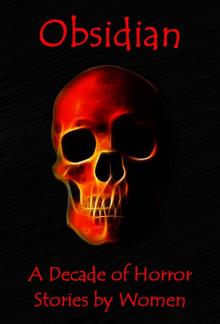 Obsidian: A Decade of Horror Stories by Women
Obsidian: A Decade of Horror Stories by Women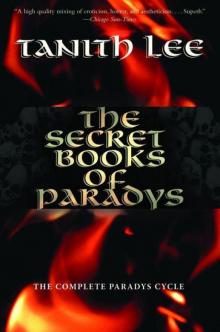 The Secret Book of Paradys
The Secret Book of Paradys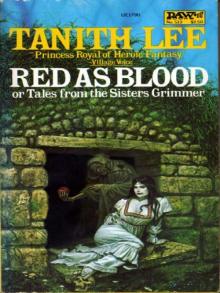 Red as Blood: or tales from the Sisters Grimmer
Red as Blood: or tales from the Sisters Grimmer The Book of the Damned
The Book of the Damned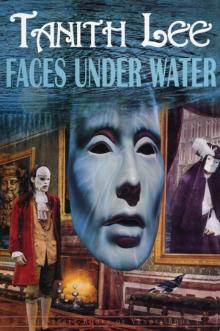 Faces Under Water
Faces Under Water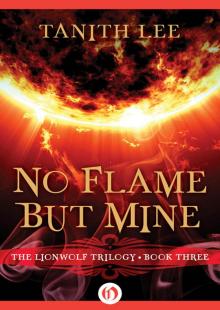 No Flame But Mine
No Flame But Mine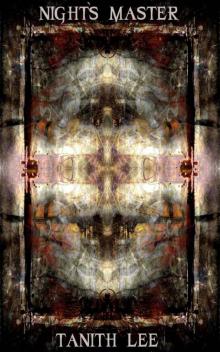 Night's Master
Night's Master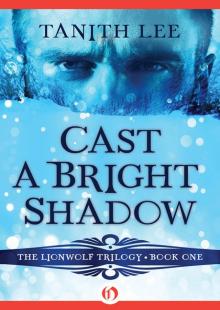 Cast a Bright Shadow
Cast a Bright Shadow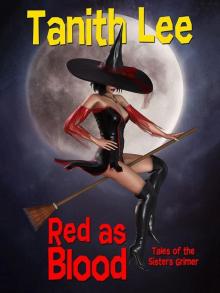 Red as Blood, or Tales from the Sisters Grimmer: Expanded Edition
Red as Blood, or Tales from the Sisters Grimmer: Expanded Edition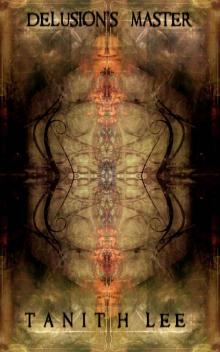 Delusion's Master (Tales From the Flat Earth)
Delusion's Master (Tales From the Flat Earth)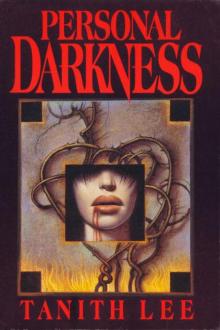 Personal Darkness
Personal Darkness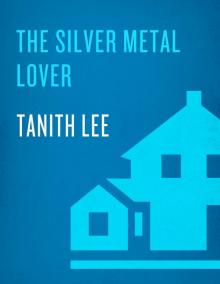 The Silver Metal Lover
The Silver Metal Lover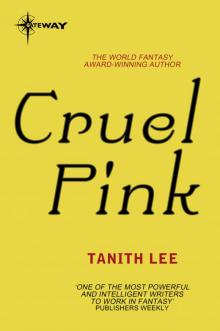 Cruel Pink
Cruel Pink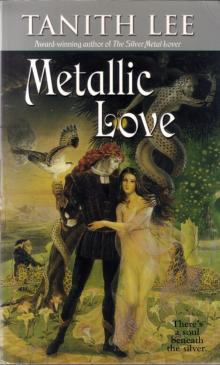 Metallic Love
Metallic Love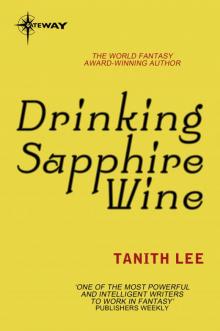 Drinking Sapphire Wine
Drinking Sapphire Wine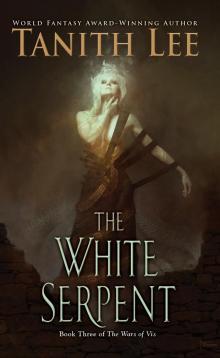 The White Serpent
The White Serpent Louisa the Poisoner
Louisa the Poisoner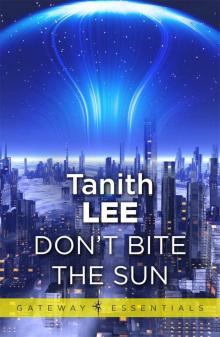 Don't Bite the Sun (Four-BEE Book 1)
Don't Bite the Sun (Four-BEE Book 1) Turquoiselle
Turquoiselle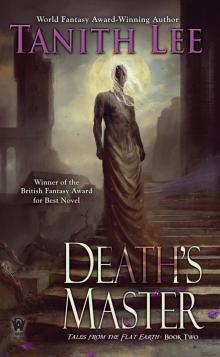 Death's Master
Death's Master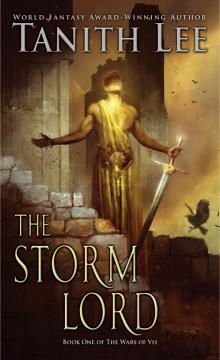 The Storm Lord
The Storm Lord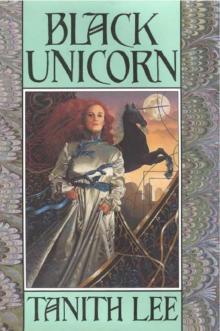 Black Unicorn (Dragonflight)
Black Unicorn (Dragonflight)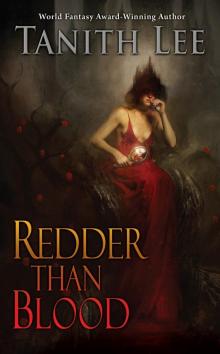 Redder than Blood
Redder than Blood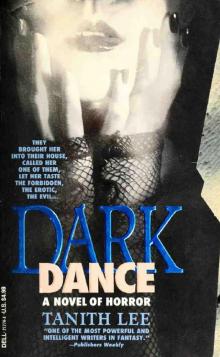 Dark Dance
Dark Dance Ivoria
Ivoria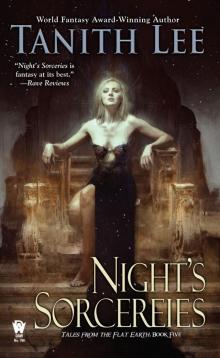 Night's Sorceries
Night's Sorceries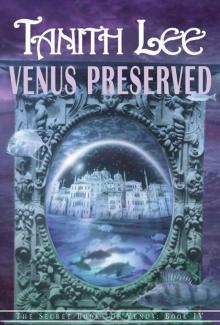 Venus Preserved (Secret Books of Venus Series)
Venus Preserved (Secret Books of Venus Series)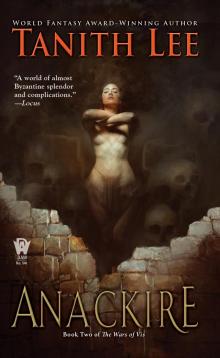 Anackire
Anackire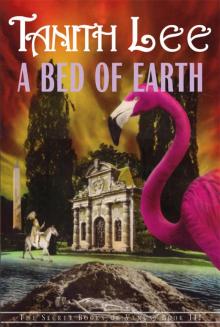 A Bed of Earth
A Bed of Earth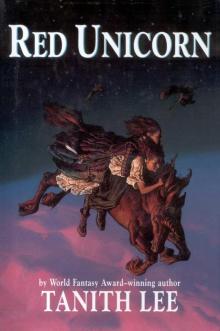 Red Unicorn
Red Unicorn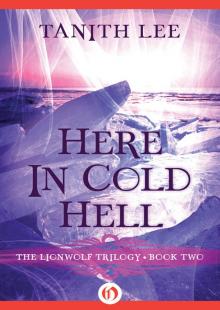 Here in Cold Hell
Here in Cold Hell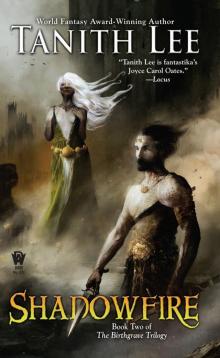 Shadowfire
Shadowfire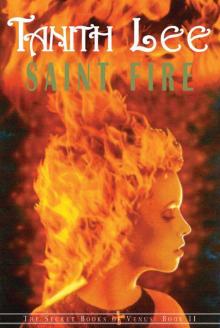 Saint Fire (Secret Books of Venus Series)
Saint Fire (Secret Books of Venus Series)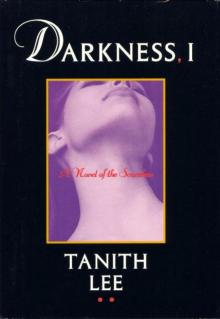 Darkness, I
Darkness, I Death Dances
Death Dances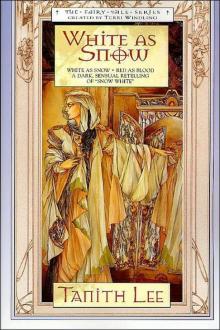 White As Snow (Fairy Tale)
White As Snow (Fairy Tale)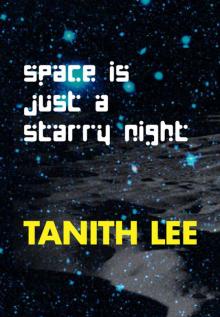 Space Is Just a Starry Night
Space Is Just a Starry Night Biting the Sun
Biting the Sun Hunting the White Witch
Hunting the White Witch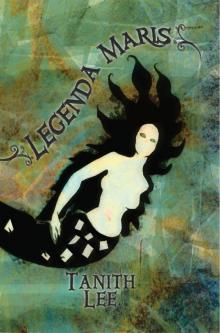 Legenda Maris
Legenda Maris Kill the Dead
Kill the Dead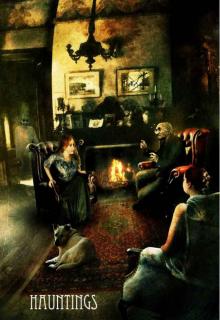 Hauntings
Hauntings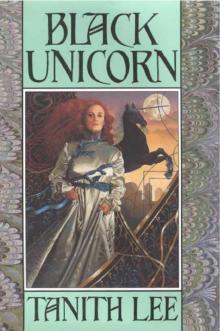 Black Unicorn
Black Unicorn Law of the Wolf Tower
Law of the Wolf Tower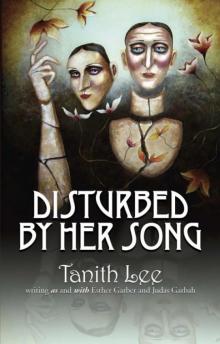 Disturbed by Her Song
Disturbed by Her Song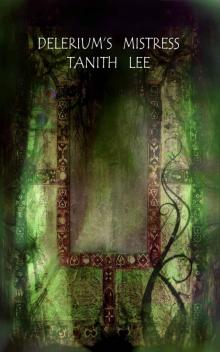 Delerium's Mistress: Tales of the Flat Earth Book 4
Delerium's Mistress: Tales of the Flat Earth Book 4 Mortal Suns
Mortal Suns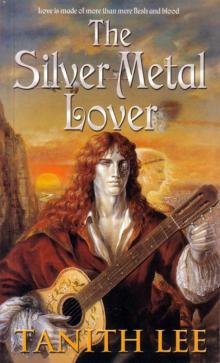 The Silver Metal Lover s-1
The Silver Metal Lover s-1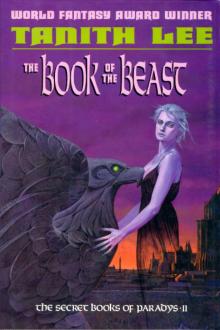 The Book of the Beast
The Book of the Beast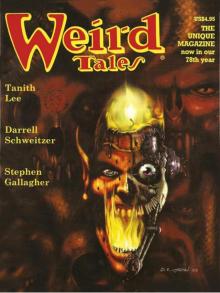 Weird Tales #327
Weird Tales #327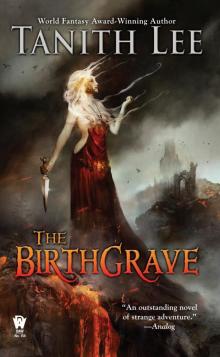 The Birthgrave
The Birthgrave